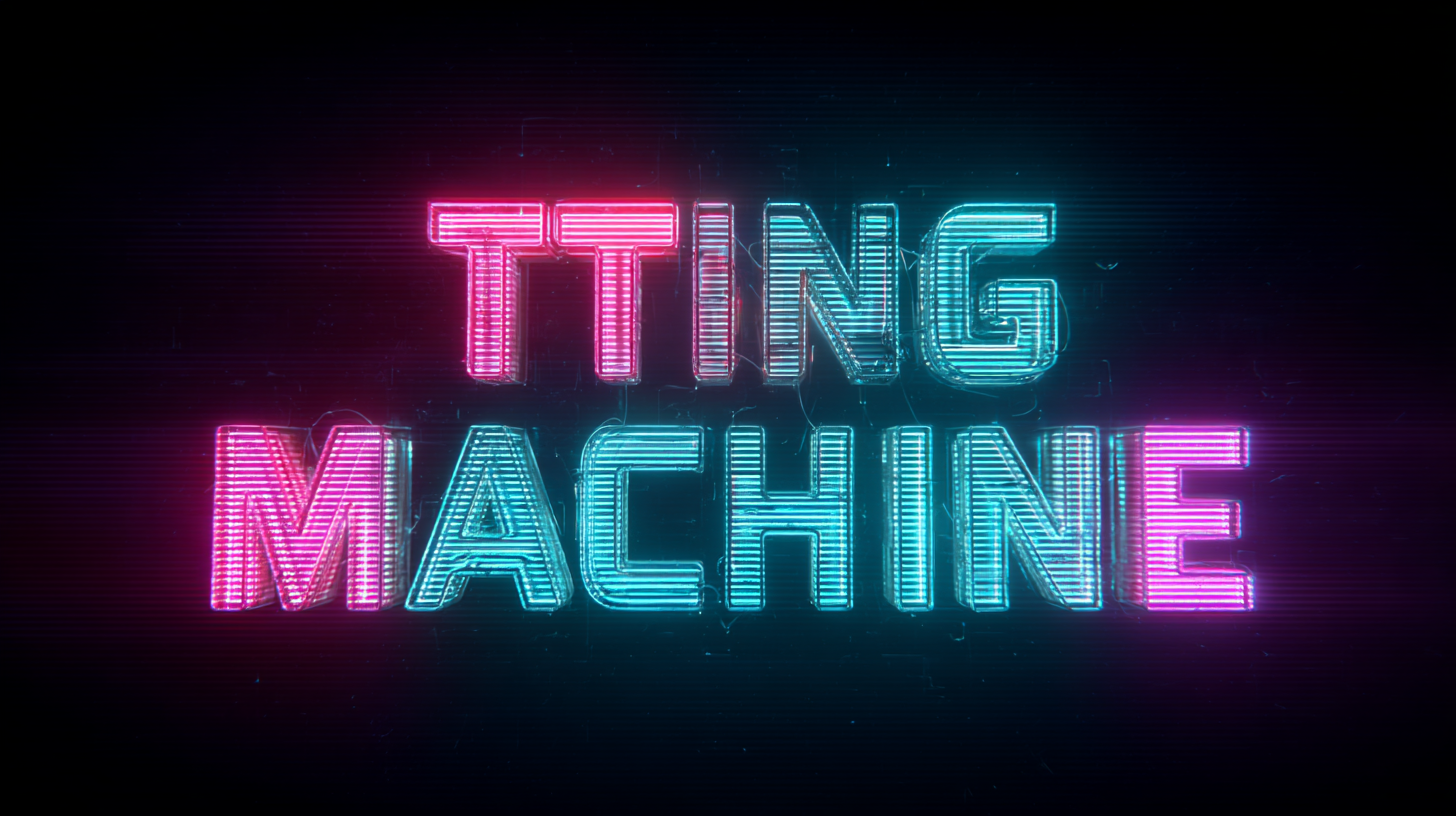


The cutting machine industry is on the brink of significant transformation as we approach 2025, driven by innovations in technology and evolving market demands. According to a recent report from Markets and Markets, the global cutting machine market is projected to grow from USD 2.1 billion in 2020 to USD 3.5 billion by 2025, reflecting a CAGR of 10.3%. This surge is attributed to advancements in automated cutting technology, increasing demand in sectors such as textiles, metal fabrication, and packaging, and a heightened focus on precision and efficiency.

As businesses strive to meet the changing needs of consumers while maximizing productivity, understanding the latest product specifications and operational strategies will be critical. This blog aims to explore the upcoming trends and success stories within the cutting machine market, highlighting how companies can leverage these developments to stay competitive in the fast-evolving landscape.
As we edge closer to 2025, the cutting machines market is evolving rapidly, driven by technological advancements and increased demands across various industries. Future success in this field hinges on identifying key features that enhance performance, efficiency, and user experience. Smart technology integration, such as IoT connectivity and predictive maintenance, is becoming essential, allowing manufacturers to optimize their operations and minimize downtime. Machines equipped with AI capabilities can analyze data in real time, facilitating better decision-making and reducing waste in cutting processes.
Additionally, sustainability is set to play a significant role in the features of cutting machines. As environmental concerns grow, machines that utilize energy-efficient technologies and produce less waste will be prioritized in the market. Manufacturers will seek machines that not only meet production goals but also adhere to eco-friendly practices. Furthermore, customization options that cater to specific customer needs will provide a competitive edge, enabling businesses to tailor their cutting solutions for various applications. The future of cutting machines lies in a combination of innovation, sustainability, and adaptability, positioning them for success in an ever-evolving landscape.
When evaluating supplier reliability for cutting machines, several essential qualities must be taken into account. Firstly, the supplier's experience in the industry plays a critical role. A supplier with a proven track record not only understands the technical requirements but also the market demands and challenges, thereby ensuring that they can offer solutions that are both innovative and efficient. Their experience often translates to a deeper understanding of customer needs and the ability to provide timely support.

Secondly, the quality of customer service is paramount. Suppliers who prioritize responsiveness and communication foster strong partnerships. Effective customer service can greatly influence the success of operations, especially during critical moments like machinery breakdowns or when modifications are required. A reliable supplier should also offer comprehensive after-sales support, including maintenance services and training for staff to maximize the utility of cutting machines.
Another vital aspect is the transparency of supplier practices. Suppliers who maintain open communication regarding their production processes, sourcing of materials, and compliance with industry standards build trust with their clients. This transparency not only reassures potential buyers of the quality and reliability of the machines they are purchasing but also aligns with ethical business practices that are increasingly important in today’s market.
Emerging technologies are set to revolutionize the cutting machine industry by 2025, with artificial intelligence (AI) leading the charge. AI's integration into cutting machines enhances their performance by enabling real-time data analysis and process optimization. This allows for more efficient operations, reduced material waste, and improved accuracy in cutting tasks. As manufacturers prioritize investments in digital technologies, the ability to automate complex tasks will not only streamline production processes but also address the persistent skills gap in the workforce.
The growth of the plasma cutting machine market, estimated to reach significant figures by 2030, highlights the increasing reliance on advanced technologies in manufacturing. With applications spanning diverse industrial sectors, innovations such as CNC automation afford companies the agility to adapt to dynamic market demands. Furthermore, the implementation of AI can lead to improved sustainability in operations, contributing to reduced energy consumption and lower carbon emissions in commercial settings. As we approach 2025, businesses that leverage these technological advancements will be well-positioned to thrive in a competitive landscape.

As the cutting machine industry evolves, successful partnerships between manufacturers and suppliers are becoming crucial. Case studies reveal how companies that strategically align with cutting machine suppliers are reaping significant benefits. For instance, a recent collaboration between a textile manufacturing firm and a leading cutting machine supplier resulted in a 30% increase in production efficiency. By leveraging advanced technologies and automation features offered by the supplier, the manufacturer was able to reduce waste and streamline operations. This partnership not only enhanced their competitive edge but also allowed them to meet the growing demand for custom fabrics in a timely manner.
Another noteworthy example involves a metal fabrication company that partnered with a supplier specializing in laser cutting technology. Through this collaboration, they implemented state-of-the-art cutting machines that provided precision and speed previously unattainable. The case study highlighted an impressive turnaround time reduction for complex parts, transforming the company’s ability to fulfill large orders rapidly. These success stories illustrate the essential role of supplier relationships in maximizing the potential of cutting machines, setting a strong precedent for other businesses aiming to thrive in the competitive market landscape of 2025.
| Supplier Type | Partnership Success Rate | Market Growth (% YoY) | Customer Satisfaction Score | Innovation Index |
|---|---|---|---|---|
| Laser Cutting Machines | 85% | 12% | 92/100 | 9.1/10 |
| Plasma Cutting Machines | 78% | 10% | 88/100 | 8.5/10 |
| Waterjet Cutting Machines | 92% | 15% | 95/100 | 9.5/10 |
| CNC Cutting Machines | 80% | 11% | 90/100 | 9.0/10 |
| Portable Cutting Machines | 75% | 9% | 85/100 | 8.0/10 |
As we approach 2025, the landscape for cutting machines is evolving rapidly, influenced by various market trends. One significant aspect in selecting the right vendors is understanding their alignment with current technological advancements. In particular, industries that rely on automated solutions are witnessing a surge in demand, such as the autonomous mobile robots market, projected to reach $9.9 billion by 2032. This indicates a growing preference for suppliers who can deliver cutting-edge technology and adaptability.
Moreover, as globalization opens doors for manufacturing businesses to venture into international markets, the selection of vendors becomes even more critical. Companies must adopt strategic approaches to ensure their partners can navigate diverse regulatory environments and supply chain complexities. For instance, insights from the granite and quartz sink market, expected to grow significantly by 2033, highlight the increasing importance of robust networks and reliable sources. This understanding will empower manufacturers to make informed decisions when choosing vendors that can sustain their competitive edge in a rapidly evolving market.